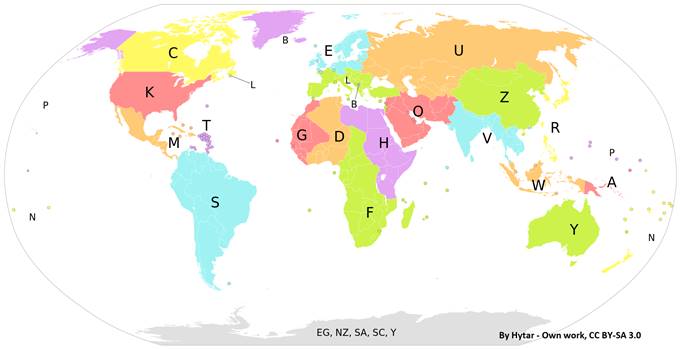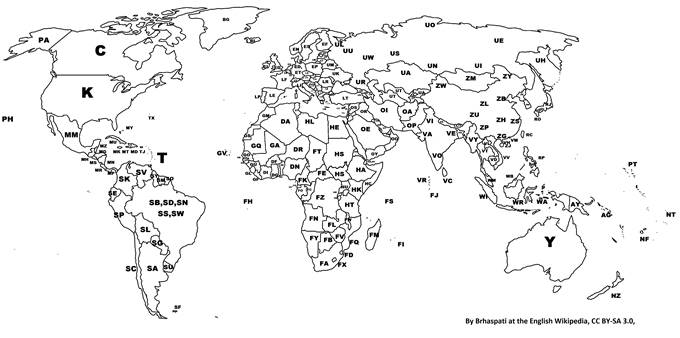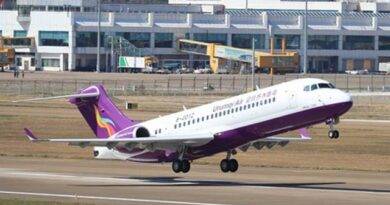IATA and ICAO Airport Codes
Airports Council International (ACI) World Airport Traffic Report (2015) pinpoints that there were 17.678 commercial airports in the world and if we add noncommercial airports this number rises up to more than 40.000. In addition, new airports were built since that report (maybe some of them are closed) has been released. This huge pool brings the matter of identification codes. ICAO and IATA codes of airports both serve to that purpose. (ICAO codes are also used for the identification of some other aviation facilities like Area Control Centers and Weather stations…)
Some of you may recognize that airports have two identification codes. One of them is a three letter code and the other has four letters. For example MADRID-BARAJAS AIRPORT in Spain has two codes MAD and LEMD. So here comes the question “what are these codes?” and “what are their purposes?”.
A Little Math
(A little detail: If you are curious about how many codes are available for both IATA and ICAO lets calculate. There are 26 letters in English Alphabet and with a simple math there are three letters in IATA codes that means 26 alternatives for each digit. That means three exponent of 26 (26*26*26) is equal to 17.576. This means in theory there can be 17.576 different IATA codes and when it comes to ICAO codes as we did in IATA but now there are four letters which mean we will calculate 4 exponent of 26 (26*26*26*26) is equal to 456.976 possible IATA codes in theory. The word theory is underlined because, for example in practice some letters like “J” are not used at the beginning of ICAO codes).
IATA codes
Let’s start with three letter codes of airports. They are IATA codes (International Air Transport Association) and assigned as an identifier of the airport. First it must be unique and cannot be allocated by another airport. The code may be the first letters of the name of the airport (for example: John F Kennedy Airport’s IATA code – JFK) or another three letter abbreviation may be given by IATA which has a relation with the name of the airport. As written above Madrid Barajas Airport has IATA code of MAD, Ontario International Airport has ONT, Brisbane International Airport (Australia) has BNE as IATA code.
Moreover, passengers generally see and are familiar with IATA codes. These codes are generally used on tickets, baggage stickers, airline timetables and more.
ICAO codes
Now let’s identify ICAO codes. These codes consist of four letters. For example Madrid Barajas Airport has LEMD as ICAO code, Heathrow Airport (London) has EGLL ICAO code. Instead of IATA codes ICAO codes have a structure which a user may deduce a code. Let’s analyze the code LFMN (Nice Côte d’Azur Airport / France).
The first letter “L” refers to the ICAO code region and L is allocated for South part of Europe. Than the second letter “F” refers to France as you guess.
EHAM is the ICAO code of Amsterdam Schiphol Airport. The first letter “E” refers to Northern Europe and then “H” comes for Holland.
The code YBBN refers to Brisbane Airport in Australia and “Y” is the letter of Australian region.
As you see if you know the letter referring to a region you will have an idea of that airport’s location. For example for the code LEBL (Barcelona-El Prat Airport) it is now easy to say that this airport is on south of Europe and more, for E we can say it is in España (Spain).


Exception Kosovo
Although ICAO codes has a structure, there are a few exceptions like Kosovo. After Kosovo declared its independence (17 February 2008) it couldn’t get L-X-X-X codes. Although it is in the South of Europe, Kosovo is grouped with Greenland and Iceland and has BK-X-X codes because of all L-X-X-X codes were allocated to other countries.
As mentioned briefly in the beginning when a passenger looks at a ticket there will be IATA code of the airport or when you stand in front of an information board at an airport for delay information you will see IATA codes. On the other hand, an Air Traffic Controller or a Pilot uses ICAO codes while on duty.
As you see both coding systems (ICAO and IATA) serve to the same purpose: Identification. But it is fair to say that while IATA codes are mostly used in passenger related fields, ICAO codes are mostly used in technical side of aviation like Air Traffic Management.
References and Further Reading
- IATA Airline and Airport Codes Search: https://www.iata.org/en/publications/directories/code-search/
- ICAO Location Indicators: https://en.wikipedia.org/wiki/ICAO_airport_code
- ICAO airport code vs. IATA airport code: https://en.wikipedia.org/wiki/IATA_airport_code
- Lists of airports by IATA and ICAO code: https://en.wikipedia.org/wiki/International_Air_Transport_Association
- Avcodes Airport Code Search: https://www.avcodes.co.uk/



Very interesting article. I am not an aviation professional and this kind of information always fascinate me. Good reading material. Keep them coming.